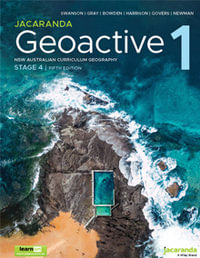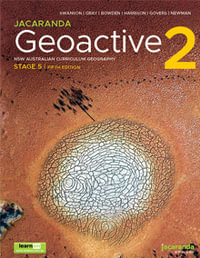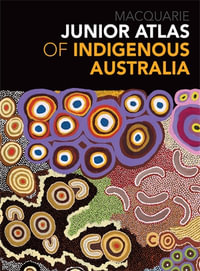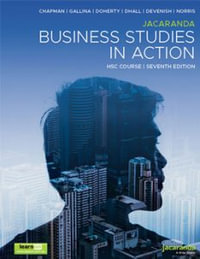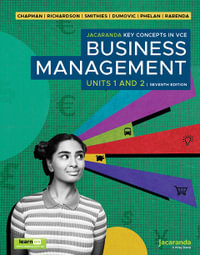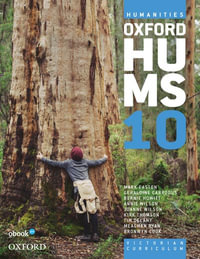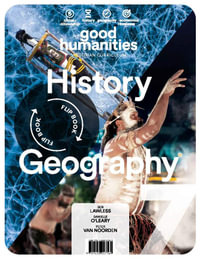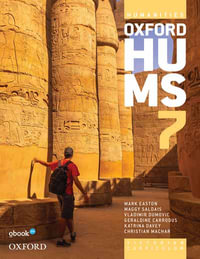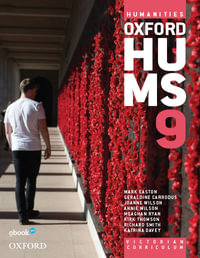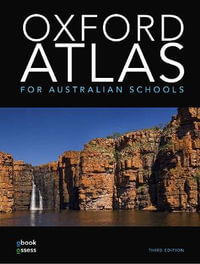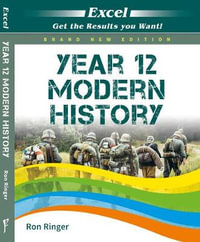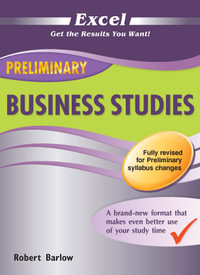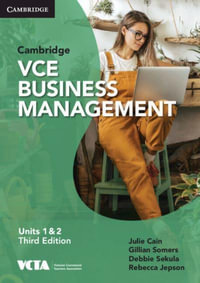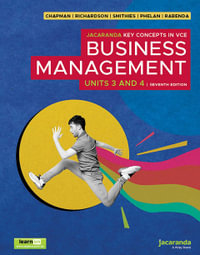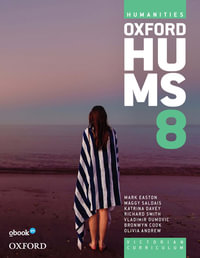Chapter and lesson structure ix
Comprehensive teacher support xi
The Geoactive package xii
Acknowledgements xiv
1 The world of Geography 1
1.1 Overview 1
1.2 Geographical inquiry 2
1.3 Geographical concepts 10
1.4 Work and careers in Geography
1.5 SkillBuilder — Reading contour lines on a map
1.6 Writing skills in Geography
1.7 Review 23
Unit 1 Sustainable Biomes 27
2 Biomes 29
2.1 Overview 30
2.2 Features of biomes 31
2.3 Major Australian biomes 36
2.4 SkillBuilder — Describing spatial relationships in thematic maps
2.5 The role of climate in biomes 42
2.6 The role of soil and vegetation in biomes 45
2.7 SkillBuilder — Constructing and describing a transect on a topographic map
2.8 Use of grassland biomes 52
2.9 Productivity of coral reef biomes 56
2.10 Investigating topographic maps — Coastal wetland biome in Dalywoi Bay 59
2.11 Thinking Big research project — Our world of biomes AVD
2.12 Review 63
3 Biomes produce food 67
3.1 Overview 68
3.2 Feeding the world 69
3.3 SkillBuilder — Constructing ternary graphs
3.4 Traditional agriculture 79
3.5 Food security over time in Australia 83
3.6 Food production in Australia 92
3.7 SkillBuilder — Describing patterns and correlations on a topographic map
3.8 Rice — An important food crop
3.9 Cacao — A special cash crop
3.10 Investigating topographic maps — Horticulture in Carnarvon 100
3.11 Thinking Big research project — Subsistence living gap-year diary
3.12 Review 104
4 Changing biomes 109
4.1 Overview 110
4.2 Food production’s effect on biomes 111
4.3 Modifying our forests 117
4.4 SkillBuilder — GIS — Deconstructing a map
4.5 Paper production and its effect on biomes
4.6 Overfishing our ocean biome 124
4.7 SkillBuilder — Interpreting a geographical cartoon
4.8 The impact of farming on land and water 129
4.9 The impact of farming on the atmosphere 138
4.10 Diminishing global biodiversity 141
4.11 Investigating topographic maps — Food production in the Riverina 146
4.12 Thinking Big research project — Fished out!
4.13 Review 150
5 Challenges to food production 155
5.1 Overview 156
5.2 Water security and food production 157
5.3 Pollution and food production 162
5.4 SkillBuilder — Interpreting satellite images to show change over time
5.5 Land loss and food production 167
5.6 Features of a famine — Somalia
5.7 SkillBuilder — Constructing and describing complex choropleth maps
5.8 Urban expansion into food production areas 176
5.9 Climate change and food production 185
5.10 Investigating topographic maps — Yarra Yarra Creek Basin food bowl 190
5.11 Thinking Big research project — Famine crisis report
5.12 Review 194
6 Food security 199
6.1 Overview 200
6.2 Feeding the world population 201
6.3 Improving food production 206
6.4 Reducing food waste 214
6.5 SkillBuilder — Constructing a box scattergram
6.6 Food aid 222
6.7 Food aid in Australia
6.8 Fair trade
6.9 SkillBuilder — Constructing and describing proportional circles on maps
6.10 The effects of dietary changes on food supply 231
6.11 Urban farms 236
6.12 Investigating topographic maps — Lake Victoria as a food source 239
6.13 Thinking Big research project — Community garden design
6.14 Review 243
7 Geographical inquiry: Sustainable biomes 247
7.1 Overview 247
7.2 Inquiry process 248
7.3 Review 249
Unit 2 Changing Places 251
8 Causes and consequences of urbanisation 253
8.1 Overview 254
8.2 The development of urban environments 255
8.3 Distribution of urban areas 259
8.4 SkillBuilder — Comparing population profiles
8.5 Urban expansion 266
8.6 Urban decline 273
8.7 Impacts of urbanisation on the environment 279
8.8 SkillBuilder — Creating and reading pictographs
8.9 Challenges for sustainable urban environments 285
8.10 Urbanisation in Indonesia
8.11 Investigating topographic maps — Jakarta 290
8.12 Thinking Big research project — Slum improvement proposal
8.13 Review 294
9 Urban settlement patterns 299
9.1 Overview 300
9.2 Urban settlement patterns in Australia 301
9.3 Comparing urbanisation — USA and Australia 309
9.4 SkillBuilder — Creating and reading compound bar graphs
9.5 Characteristics of cities in Europe
9.6 SkillBuilder — Constructing and describing isoline maps
9.7 Characteristics of cities in South America
9.8 Consequences of urban concentration 322
9.9 Creating sustainable and liveable cities 330
9.10 Investigating topographic maps — Examining the city of São Paulo 334
9.11 Thinking Big research project — One day in Jakarta, one day in New York City
9.12 Review 338
10 Internal and international migration 341
10.1 Overview 342
10.2 Reasons people move within Australia 343
10.3 Internal migration trends in Australia 348
10.4 SkillBuilder — Drawing a line graph using Excel
10.5 Effects of internal migration in Australia 355
10.6 Case study — Internal migration in China
10.7 SkillBuilder — Constructing a land use map
10.8 International migration patterns 362
10.9 Effects of international migration 368
10.10 Investigating topographic maps — Urbanisation in Albury–Wodonga 373
10.11 Thinking Big research project — Multicultural Australia photo essay
10.12 Review 377
11 Australia’s urban future 381
11.1 Overview 382
11.2 Australia’s projected population 383
11.3 Designing sustainable cities 386
11.4 SkillBuilder — Describing change over time
11.5 Sustainable cities in Australia. 390
11.6 Managing the suburbs 397
11.7 Living vertically
11.8 Urban Renewal 401
11.9 Transport infrastructure
11.10 SkillBuilder — Writing a submission
11.11 Individual action to enhance sustainability 408
11.12 Community actions to enhance sustainability 412
11.13 Investigating topographic maps — Urban sprawl in Narre Warren 418
11.14 Thinking Big research project — Celebrating diversity
11.15 Review 422
12 Geographical inquiry — Investigating Asian megacities 427
12.1 Overview 427
12.2 Inquiry process 428
12.3 Review 429
Unit 3 Environmental Change And Management 431
13 Introducing environmental change and management 433
13.1 Overview 434
13.2 Environmental functioning 435
13.3 Lithospheric processes 438
13.4 Biospheric processes 442
13.5 Hydrological and atmospheric processes 446
13.6 Human-induced change 449
13.7 Climate change 454
13.8 Worldviews and environmental management
13.9 SkillBuilder — Evaluating alternative responses
13.10 Sustainable management 461
13.11 Ecological footprint and biocapacity 465
13.12 SkillBuilder — Drawing a futures wheel
13.13 Environmental change in Jindabyne 471
13.14 Thinking Big research project — Wacky weather presentation
13.15 Review 475
14 Land environments under threat 479
14.1 Overview 480
14.2 The causes and impacts of land degradation 481
14.3 SkillBuilder — Interpreting a complex block diagram
14.4 Managing land degradation 491
14.5 Desertification — the drylands are spreading 498
14.6 Environmental change and salinity 507
14.7 Introduced species and land degradation
14.8 Native species and environmental change
14.9 SkillBuilder — Writing a fieldwork report as an annotated visual display (AVD)
14.10 Aboriginal Peoples’ land management 519
14.11 Investigating topographic maps — Managing land degradation in the Parwan Valley 525
14.12 Thinking Big research project — Invasive species Wanted! poster
14.13 Review 529
15 Inland water management 533
15.1 Overview 534
15.2 Inland water 535
15.3 Damming rivers 539
15.4 Alternatives to dams 547
15.5 SkillBuilder — Creating a fishbone diagram
15.6 Using groundwater reserves 554
15.7 The impacts of drainage and diversion 560
15.8 Case study — Managing the Murray-Darling
15.9 SkillBuilder — Reading topographic maps at an advanced level
15.10 Investigating topographic maps — Wetlands along the Murray River 567
15.11 Thinking Big research project — Menindee Lakes murder — news report
15.12 Review 571
16 Managing change in coastal environments 575
16.1 Overview 576
16.2 How coastal landforms are created 577
16.3 Deposition and erosion of coasts 580
16.4 Human causes of coastal change 584
16.5 Case study — Environmental change in the Tweed and Gold Coast
16.6 Impacts of inland activities on coasts 589
16.7 SkillBuilder — Comparing aerial photographs to investigate spatial change over time
16.8 Impacts on low islands
16.9 Managing coastal change 594
16.10 SkillBuilder — Comparing an aerial photograph and a topographic map
16.11 Factors influencing coastal management strategies 600
16.12 Contributing to environmental sustainability in coastal zones 603
16.13 Investigating topographic maps — Consequences of coastal change in Merimbula 606
16.14 Thinking Big research project — Ecology action newsletter — reef rescue
16.15 Review 610
17 Marine environments change and management 615
17.1 Overview 616
17.2 Marine processes
17.3 Marine pollution and debris
17.4 Responses to marine debris
17.5 SkillBuilder — Using geographic information systems (GIS)
17.6 Marine pollution
17.7 SkillBuilder — Describing a photographs
17.8 Investigating topographic maps — Coral bleaching on Lizard Island?
17.9 Thinking Big research project — ‘Plastic not-so-fantastic’ media campaign
17.10 Review
18 Geographical inquiry — Developing an environmental management plan 619
18.1 Overview 619
18.2 Inquiry process 619
18.3 Review 621
Unit 4 Human Wellbeing 623
19 Human wellbeing and development 625
19.1 Overview 626
19.2 Features of wellbeing 627
19.3 SkillBuilder — Constructing and interpreting a scattergraph
19.4 Examining quantitative indicators 633
19.5 Examining qualitative indicators 637
19.6 Measuring development 641
19.7 SkillBuilder — Interpreting a cartogram
19.8 Contemporary trends in wellbeing — Sustainability 646
19.9 Contemporary trends in wellbeing — Health
19.10 Contemporary trends in wellbeing — Malaria and tuberculosis
19.11 Investigating topographic maps — Norway — the best place on Earth 652
19.12 Thinking Big research project — UN report — Global wellbeing comparison
19.13 Review 656
20 Spatial variations in human wellbeing 661
20.1 Overview 662
20.2 Variations in wellbeing between countries 663
20.3 Variations in wellbeing within countries 669
20.4 SkillBuilder — Using Excel to construct population profiles
20.5 Internal reasons for variations in wellbeing 675
20.6 External reasons for variations in wellbeing 679
20.7 Variations in wellbeing within the middle class
20.8 SkillBuilder — Developing structured and ethical approaches to research
20.9 Population management and wellbeing 685
20.10 Gender, development and wellbeing 689
20.11 Investigating topographic maps — Spatial variations in wellbeing in Tokyo, Japan 694
20.12 Thinking Big research project — The displaced Rohingya children
20.13 Review 698
21 Human wellbeing in Australia 701
21.1 Overview 702
21.2 Characteristics of Australia’s population 703
21.3 Variations in rural and urban wellbeing 707
21.4 Human wellbeing in Sydney 712
21.5 SkillBuilder — Using multiple data formats
21.6 Wellbeing of Aboriginal Peoples and Torres Strait Islander Peoples 717
21.7 SkillBuilder — Understanding policies and strategies
21.8 Wellbeing for people living with disabilities 724
21.9 Investigating topographic maps — Wellbeing in the Northern Territory 728
21.10 Thinking Big Research Project — SDG progress infographic
21.11 Review 732
22 Improving Human Wellbeing 737
22.1 Overview 738
22.2 The role of governments in improving human wellbeing 739
22.3 The role of NGOs in improving human wellbeing 744
22.4 The role of individuals in improving human wellbeing 747
22.5 Improving wellbeing for Aboriginal Peoples and Torres Strait Islander Peoples 753
22.6 SkillBuilder — Debating like a geographer
22.7 Improving wellbeing in Brazil 758
22.8 SkillBuilder — Writing a geographical Essay
22.9 Investigating topographic maps — Measuring wellbeing in Cumborah 764
22.10 Thinking Big research project — Improving wellbeing in a low-HDIranked country
22.11 Review 768
23 Fieldwork inquiry — Comparing wellbeing in the local area 773
23.1 Overview 773
23.2 Inquiry process 773
23.3 Review 775
Glossary 777
Index 786

